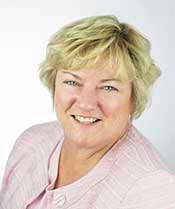Flexible Packaging Delivers in the Ecommerce Era
There are several vital factors that brand owners should consider when packaging products for ecommerce instead of retail.
September 9, 2020

As states across the US issued stay-at-home orders in response to the pandemic, many consumers resorted to placing online orders for essential purchases like groceries. You are likely familiar with the everyday sight of delivery trucks descending upon your neighborhood to provide timely deliveries right outside your door. This is not unique to your area: so many consumers switched their purchase habits to digital alternatives that eMarketer is now predicting ecommerce in the US will grow by 18% in 2020.
This monumental shift in consumer habits changes everything for brand owners who are used to tailoring their product designs and packaging decisions for retail environments. Instead of gradually adjusting strategies, they are faced with a sudden and widespread demand for ecommerce alternatives. There are several factors that brand owners must consider when packaging products for ecommerce instead of retail.
Inherent product protection.
For starters, ecommerce increases the number of touch points between the initial order and the end destination. Compared to traditional retail, in fact, an ecommerce product is handled at least three times more often. Flexible packaging is an ideal option for ecommerce because it offers added protection and durability that can resist breakage, prevent spills, and keep multiple products together.
|
The Mt. Olive Pickle Co. Mt. Love, NC, launched the first snack pickles in shelf-stable stand-up pouches. Manufactured by Glenroy, Menomonee Falls, WI, the custom pouch structure preserves flavor and keeps pickles fresh after opening due to the press-to-close zipper reclosure. The lightweight, durable pouch allows for increased portability and is ideal for ecommerce markets. |
“Less is more” reduces environmental impact.
For some product categories, flexible packaging can protect products during shipping without an overbox — a corrugated box that holds another similar corrugated box within to withstand the rigors of ecommerce handling. This is important for brand owners since additional packaging often results in a larger environmental footprint. For example, in a streamlined life cycle comparison between shoes delivered with a flexible mailer or with an overbox, the outer box format resulted in a higher environmental impact for fossil fuel consumption (+14.2%) and greenhouse gas emissions (+65.6%).
Another consideration is how consumers use the product after they receive it; clothing and shoes, often have return rates of up to 50%.
Flexible packaging can have recloseable features that enable easy returns without requiring consumers to use new packaging, thus, minimizing the environmental impact.
Shipping savings using flexible formats.
Unlike retail applications, ecommerce scales down shipping into individual units (not bulk units), the cost of which must factor into the consumer’s decision-making process. To drive sales and reduce the impact of shipping costs, brand owners need to understand how product and package design can affect shipping rates. One of the advantages of using flexible formats is that they typically result in reduced dimensional weight. Since billable weight is determined by whichever value is greater — actual or dimensional weight — shipping costs can be lower for a package that is space-efficient.
Consider this case study example for shipping a pair of shoes.

As you can see, the flexible format results in about $4 shipping savings per unit, which can be attributed to minimal air space surrounding the product. Looking beyond the benefits of shipping individual units using flexible packaging, these materials can also optimize shipping space on trucks.
Confronting the new reality.
As we have seen this year, ecommerce continues to rise. In fact, it’s not a trend — it’s the new reality. Brand owners that adjust their strategies and consider the benefits of flexible packaging in ecommerce applications will set themselves up for future success.
About the Author
Alison Keane, Esq., IOM, CAE, has served as President and CEO of the Flexible Packaging Association since October 2016, and provides strategic leadership and advocacy to advance and grow the flexible packaging industry. Keane previously served as the Vice President for Government Affairs and Industry Programs with the American Coatings Association. An environmental attorney, with 25 years of experience in the association and government sectors, Keane has also served at the Environmental Protection Agency and the Maryland State Senate.
About the Author(s)
You May Also Like



